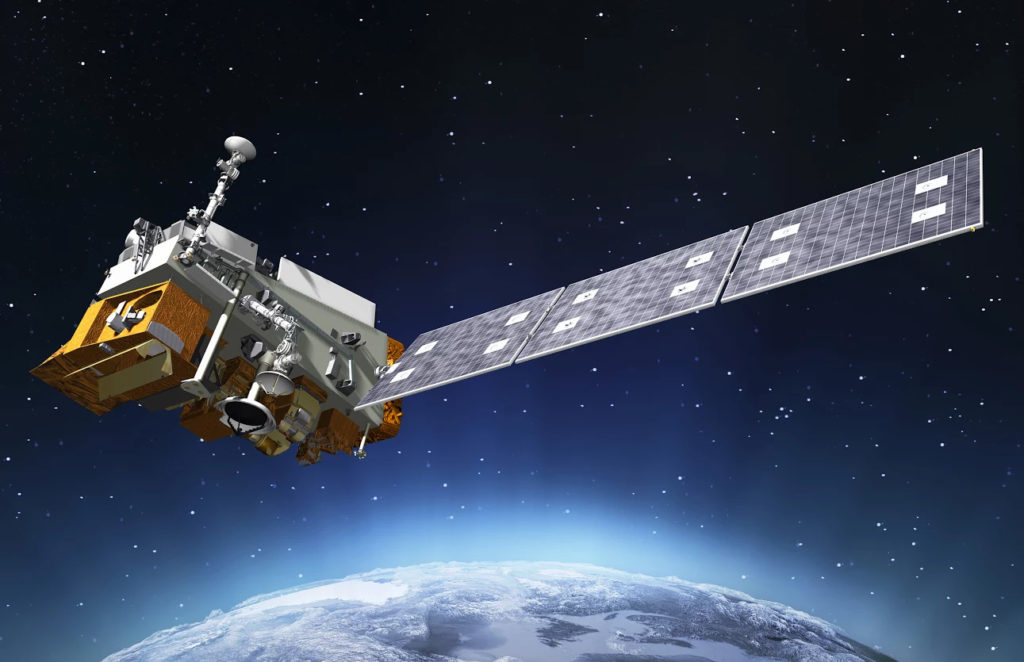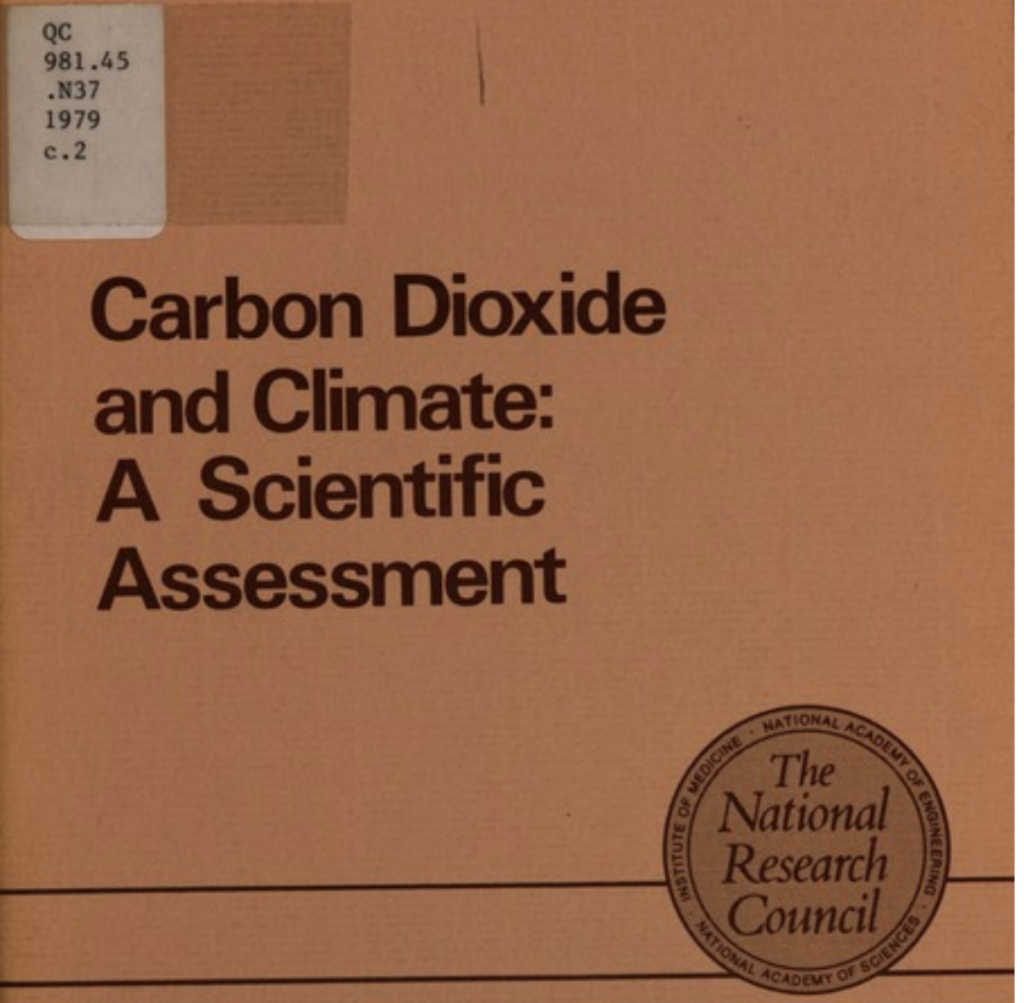
Explainer: How scientists estimate ‘climate sensitivity’
Zeke Hausfather
06.19.18Zeke Hausfather
19.06.2018 | 3:00pmThe sensitivity of the Earth’s climate to increases in atmospheric CO2 concentration is a question that sits at the heart of climate science.
Essentially, it dictates how much global temperatures will rise in response to human-caused CO2 emissions, but it is a question that does not yet have a clear answer.
For many years, estimates have put climate sensitivity somewhere between 1.5C and 4.5C of warming for a doubling of pre-industrial CO2 levels. This range has remained stubbornly wide, despite many individual studies claiming to narrow it. However, recent work combining multiple lines of evidence may have helped modestly narrow this range.
Here, Carbon Brief examines studies of climate sensitivity published over the past two decades. These studies use climate models, recent observations and palaeoclimate data from the Earth’s more distant past to estimate climate sensitivity.
While narrowing the range of sensitivity will not change the need for rapid decarbonisation, it may help policymakers fine-tune their plans for the future.
Different types of sensitivity
Climate sensitivity refers to the amount of global surface warming that will occur in response to a doubling of atmospheric CO2 concentrations compared to pre-industrial levels.
CO2 has increased from its pre-industrial level of 280 parts per million (ppm) to around 408 ppm today. Without actions to reduce emissions concentrations are likely to reach 560 ppm – double pre-industrial levels – around the year 2060.
There are three main measures of climate sensitivity that scientists use. The first is equilibrium climate sensitivity (ECS). The Earth’s climate takes time to adjust to changes in CO2 concentration. For example, the extra heat trapped by a doubling of CO2 will take decades to disperse down through the deep ocean. ECS is the amount of warming that will occur once all these processes have reached equilibrium.
The second is transient climate response (TCR). This is the amount of warming that might occur at the time when CO2 doubles, having increased gradually by 1% each year. TCR more closely matches the way the CO2 concentration has changed in the past. It differs from ECS because the distribution of heat between the atmosphere and oceans will not yet have reached equilibrium.
A third way of looking at climate sensitivity, Earth system sensitivity (ESS), includes very long-term Earth system feedbacks, such as changes in ice sheets or changes in the distribution of vegetative cover.
TCR tends to be notably lower than ECS. The Intergovernmental Panel on Climate Change (IPCC) fifth assessment report, completed in 2014, gave a likely ECS range of 1.5C to 4.5C of warming for a doubling of atmospheric CO2 concentrations, but a likely TCR of only 1C to 2.5C.
Feedbacks drive uncertainty
The wide range of estimates of climate sensitivity is driven by uncertainties in climate feedbacks, including how water vapour, clouds, surface reflectivity and other factors will change as the Earth warms. Climate feedbacks are processes that may amplify (positive feedbacks) or diminish (negative feedbacks) the effect of warming from increased CO2 concentrations or other climate forcings – factors that initially drive changes in the climate.
Simple physics shows the world will warm by a bit more than 1C once CO2 doubles, if feedbacks are not taken into account. However, there is extremely strong evidence that feedbacks will amplify this warming, based on the Earth’s past and the physical processes involved.
Water vapour – itself a powerful greenhouse gas – is the single largest and one of the best-understood climate feedbacks. As the world warms, the amount of water vapour in the atmosphere is expected to increase and, therefore, so too will the greenhouse effect.
Measurements from satellites confirm that water vapour concentrations have been increasing in step with temperatures in the atmosphere over the past few decades.
A warmer and wetter atmosphere will also affect cloud cover. However, it is much more uncertain how changes in cloud cover will influence climate sensitivity.
An increase in low-altitude clouds would tend to offset some warming by reflecting more sunlight back to space, whereas an increase in the height of high-altitude clouds would trap extra heat. Meanwhile a shift in sun-blocking clouds from the tropics towards the poles, where the incoming sunlight is less intense, would decrease their power to block sunlight.
Changes in the composition of clouds also matter: clouds that contain more water droplets are “optically thicker” and more effective at blocking sunlight than those composed mainly of ice crystals. All this means the global net effect of cloud feedbacks is complex and hard for scientists to model precisely.
A warming world will also have less ice and snow cover. With less ice and snow reflecting the sun’s rays, melting will decrease Earth’s albedo and amplify warming.
The combination of these and other feedbacks converts the ~1C warming from doubled CO2 alone into an uncertain range of possible warming, from around 1.5C to 4.5C.
A remarkably stable range
In 1979, the Charney Report from the US National Academy of Sciences suggested that ECS was likely somewhere between 1.5C and 4.5C per doubling of CO2. Nearly 40 years later, the best estimate of sensitivity is largely the same. This has led some to question why there has been so little progress on estimating climate sensitivity.
However, Prof Andrew Dessler at Texas A&M University pushes back on this suggestion. He tells Carbon Brief:
I think that the idea that ‘uncertainty has remained the same since the late 1970s’ is wrong. If you look at the Charney report, it’s clear that there were a lot of things they didn’t know about the climate. So their estimate of uncertainty was, in my opinion, way, way too small
Over time, we have learned a lot more about the climate and the expert judgement about how to evaluate uncertainty has also improved. So while it may appear that the uncertainty has remained the same, this reflects that the improvements in our understanding of climate sensitivity have been largely masked by improvements in our understanding of the uncertainty. In fact, I think I could argue that today’s range overestimates the actual uncertainty.
Back in 1979, climate science was much less well understood than today. There were far fewer lines of evidence to use in assessing climate sensitivity. The Charney report range was based on physical intuition and results from only two early climate models.
In contrast, modern sensitivity estimates are based on evidence from many different sources, including models, observations and palaeoclimate estimates. As Dessler suggests, one of the main advances in understanding of climate sensitivity over the past few decades is scientists’ ability to more confidently rule out very high or very low climate sensitivities.
Different ways of estimating sensitivity
So, what are these different lines of evidence that climate scientists use to assess climate sensitivity?
Physics-based climate models of the Earth can be used to run simulations of how much warming will occur once CO2 concentrations have doubled. Climate sensitivity represents an “emergent property” of climate models, rather than something that has been programmed in ahead of time.
Climate models give a wide range of sensitivity estimates, so researchers often examine subsets of climate models – selected based on how well they match different present-day observations of the climate. These are referred to here as “constrained models”.
Sensitivity can also be estimated from instrumental records of surface temperatures and ocean heat content, combined with models of how climate forcings have changed in the past.
Scientists can also look at the more distant past to evaluate the sensitivity of the climate, by comparing palaeoclimate changes in the Earth’s past to estimates of changes in forcings.
Finally, scientists can combine multiple different approaches to try and get a more comprehensive picture.
The figure below, created by Carbon Brief, shows an assessment of climate sensitivity estimates published since the year 2000. It is based on data from a 2017 Nature Geoscience paper by Prof Reto Knutti and colleagues at ETH Zurich and updated through to the present day.
Each dot shows the best estimate of climate sensitivity from an individual study, while the bars show the range of possible sensitivity values assessed by that study. The colour indicates the type of study.
It is worth noting that different studies sometimes use different measures for a “best estimate” as well as for the range of sensitivity and, therefore, are not always directly comparable. As a result, the smoothed average of the best estimates (black line) and range (shaded grey area) should be seen only as illustrative of the spread of uncertainty.
(Expand any area of the chart below by dragging the cursor to “draw” a box.)
While a number of studies were published in earlier decades, the chart highlights the flurry of research since the early 2000s. Most studies have a best estimate of sensitivity between 1.5C and 4.5C, but there are a few very-high or very-low sensitivity studies as well.
The range of sensitivity across all of these studies has likely narrowed slightly over time, though the average has remained fairly close to 3C. Contrary to claims on a number of climate sceptic websites, there is no evidence of any downward trend in sensitivity in recent years when all studies are considered.
There has, however, been some disagreement in recent years on the lower end of the sensitivity range. Model and palaeoclimate-based approaches (blue and purple lines and dots) rarely provide sensitivity estimates below 2C, whereas approaches that use instrumental data (orange) often have. This contributed to the IPCC broadening its sensitivity range from 2C to 4.5C in its fourth assessment report, published in 2007, to 1.5C to 4.5C in its fifth assessment.
Different methods produce different estimates in part because they are measuring different properties of the climate system. The timescales over which climate sensitivity is inferred – since it cannot be directly measured – matter a lot, so different methods can be expected to give different estimates even if each is accurate.
The figure below illustrates the range of sensitivities found by different types of studies. The coloured bars show the median of high and low estimates of sensitivity for all studies published since the year 2000, with the median of best estimates shown by black dots.
Overall, most approaches generally show sensitivity of around 3C per doubling of CO2. Studies based on instrumental data are something of an outlier, tending to show a considerably lower estimate of around 2C. Palaeoclimate studies show a best estimate of around 3C, but tend to have a larger high-end uncertainty than other approaches. This is because they include some studies that reflect longer-term feedbacks associated with ESS.
Low sensitivity from instrumental records
So, why do some approaches tend to produce higher or lower sensitivity estimates than others?
As noted above, estimates based on instrumental climate records tend to show lower climate sensitivity. There has been intense focus on this apparent anomaly since the publication of an influential 2013 paper by Dr Alexander Otto of the University of Oxford and 16 others, which put ECS at between 1.2C and 3.9C, with a best estimate of 2C.
Some commentators have argued the instrumental approach is preferable as it is based on physical observations. However, estimates from instrumental records still require a conceptual or physical mode of the climate to work.
As Knutti and colleagues suggest: “These methods do rely on models: both to provide forcing estimates, such as aerosol forcing, and to link forcing to climate response through energy balance models. Hence, observational estimates are complementary to methods using comprehensive models, but have their own uncertainties.”
There are several reasons why estimates based on instrumental studies may be lower than other methods.
Substantial uncertainties exist in estimates of forcing from aerosols, as well as estimates of ocean heat content. The choice of instrumental record used in assessing changes in surface temperatures can also have a large impact on the result.
Some instrumental surface temperature records have poor coverage over the fast-warming Arctic and other regions of the world. Relying on incomplete observations misses some of the temperature rise. Surface temperature records also combine sea surface temperatures over the oceans with surface air temperatures over land, while climate sensitivity from models refers to global air temperatures over the land and ocean.
Dr Mark Richardson at NASA’s Jet Propulsion Laboratory and colleagues published a paper in 2016 estimating climate sensitivity in models matching the same things that instrumental records are actually measuring. They found that this results in sensitivity estimates similar to those obtained from instrumental approaches.
The figure below shows the TCR estimate in Otto et al to the left (yellow), that from CMIP5 climate models in the middle (blue), and TCR estimates from CMIP5 climate models that match what instrumental records are measuring to the right (red).
While comparing like with like can reconcile much of the difference in TCR, larger differences remain between instrumental estimates of ECS and model and palaeoclimate approaches.
Researchers have tried to understand these differences in a number of recent papers exploring why instrumental approaches result in notably lower ECS estimates than other lines of evidence.
Instrumental approaches are complicated by the fact that climate forcing over the past century is not purely from CO2 and, thus, the warming has been partly masked by the cooling effect of aerosols.
One important insight is that the strength of climate feedbacks is expected to change over time, with stronger feedbacks taking longer to emerge.
A 2017 paper by Dr Cristian Proistosescu and Prof Peter Huybers at Harvard University found that amplifying feedbacks that play a large role in ECS in climate models have not fully kicked in for current climate conditions. A similar paper by Prof Kyle Armour of the University of Washington suggests feedbacks will increase by about 25% from today’s transient warming as the Earth moves towards equilibrium.
This means that sensitivity estimates based on instrumental warming to date would be on the low side, as they would not capture the larger role of feedbacks in future warming. The authors suggest that “accounting for these…brings historical records into agreement with model-derived ECS estimates”.
This is in part because feedbacks depend strongly on the spatial pattern of warming. Prof Armour elaborates in a discussion on the Climate Lab Book website:
“Nearly all GCMs [global climate models] show global radiative feedbacks changing over time under forcing, with effective climate sensitivity increasing as equilibrium is approached. As a result, climate sensitivity estimated from transient warming appears smaller than the true value of ECS…
As far as we can tell, the physical reason for this effect is that the global feedback depends on the spatial pattern of surface warming, which changes over time…One nice example is the sea-ice albedo feedback in the Southern Ocean: because warming has yet to emerge there, that positive (destabilising) feedback has yet to be activated.
This means that even perfect knowledge of global quantities (surface warming, radiative forcing, heat uptake) is insufficient to accurately estimate ECS; you also have to predict how radiative feedbacks will change in the future.”
Prof Andrew Dessler agrees, telling Carbon Brief that an understanding of how the pattern of surface warming influences sensitivity is one of the major advances in our understanding of climate sensitivity in recent years. He suggest that it “allows us to resolve the discrepancy between the 20th century [instrumental] estimates and other estimates that give higher values”.
A recent paper by NASA’s Dr Kate Marvel and colleagues uses another approach to explore the discrepancy between instrumental and model-based sensitivity estimates. Their results suggest that natural climate variability over the past few decades may have lined up, by pure coincidence, in a way that results in low ECS estimates.
They examine the results obtained from instrumental approaches using data from climate models. Because individual climate models have a climate sensitivity that can be directly measured, this provides a test of how well the historical record can accurately assess ECS. They find that the average ECS inferred from historical simulations is only 2.3C, notably lower than the actual average ECS of 3.1C across all the models.
They find an even lower implied ECS of 1.8C when using variants of the models constrained by actual observed sea surface temperatures. They suggest this means that “the specific…internal variability experienced in recent decades provides an unusually low estimate of ECS”. They point out that this appears to be mostly driven by decadal variations in cloud cover in the tropics. However, cloud cover in the tropics is not necessarily predictive of future climate change and the patterns resulting in low instrumentally-based ECS estimates may have been driven by natural variability.

View of Raiatea, French Polynesia, from the air with clouds, 2013. Credit: Dennis Frates/Alamy Stock Photo.
Challenge of constraining models
Climate models provide a wide range of climate sensitivity estimates. The CMIP5 models featured in the most recent IPCC report have ECS values ranging from 2.1C to 4.7C per doubling, with an average sensitivity of 3.1C.
However, not all models are created equal. Some perform better than others at matching historical temperatures and other climate variables. One idea, called “emergent constraints”, aims to narrow down (“constrain”) model sensitivity estimates using only the best-performing models.
This has been done in a number of different ways. For example, low-altitude cloud cover is strongly related to climate sensitivity. Models with clouds that more closely match observations show an ECS of between 3C and 4.8C – on the high end of the model range – according to a 2014 paper in Nature by Prof Steve Sherwood and colleagues.
Similarly, a second high-profile Nature paper used satellite observations of how much energy is emitted by Earth to space as their “emergent constraint”. They found that models best matching observations showed an ECS of 3C to 4.2C.
Conversely, models that best reproduce observed temperature variability show a lower ECS of 2.2C to 3.4C, according to a 2018 paper, also in Nature, by Prof Peter Cox and colleagues.
This lack of consistency means that across all the studies that Carbon Brief examined, those using constrained models had nearly the same range of sensitivity as estimates using all climate models. One reason is that different models are good at matching different types of observations. For example, those best modelling clouds are not the same as those that are good at reproducing temperature variability.
It is possible to argue that some of these studies or constraints are more compelling or physically realistic than others. This is an area of very active research. For now, it is probably premature to suggest that emergent constraints decisively show sensitivity to be lower or higher than previously thought.
These studies do have one consistent finding, however, which is that a climate sensitivity of less than 2C is very unlikely.

Clouds and Earth’s Radiant Energy System (CERES) FM6 instrument aboard a NASA Earth-observing satellite, JPSS. Credit: NASA/GSFC/JPL/LaRC, MISR Science Team.
Narrowing the range?
While the best estimate of equilibrium climate sensitivity has stubbornly remained between 1.5C and 4.5C per doubling for nearly three decades, a lot has happened in the last two years to better inform our understanding of likely ECS values.
First, the new generation of climate models – CMIP6 – featured a number of models whose sensitivity was on the high end of the canonical IPCC range. Around 35% of the new models reported ECS values above 4.5C, with 18% of the models having an ECS above 5C. However, some recent studies have suggested that the subset of very-high sensitivity models tend to relatively poorly reproduce historical temperatures – suggesting that the models more consistent with the 1.5C to 4.5C range might be more reliable projections of future warming.
At the same time, a massive multi-year project to produce a better estimate of climate sensitivity was recently completed. It combined independent lines of evidence from physical processes, historical temperatures, and paleoclimate data to narrow the likely range of ECS down to between 2.6C and 4.1C. They found that even if one of the three lines of evidence is completely excluded, the range only expands to 2.3C to 4.5C.
The chart below shows how the likely ECS range from this new study (black box), compares with AR5 (grey) and the full range of estimates from the fifth (blue) and sixth (orange) coupled model intercomparison projects (CMIP). (The CMIP5 model projections fed into AR5, while CMIP6 will underpin the forthcoming sixth assessment report, AR6.)
These conflicting sets of ECS estimates pose a bit of a dilemma for the authors of the upcoming IPCC 6th Assessment Report. While past reports have generally had climate models with ECS values well within the IPCC’s likely ECS uncertainty range, the same may not be true this time around.
Does sensitivity matter?
Climate sensitivity is an important scientific uncertainty, and narrowing the range could have significant consequences. One economic study by Dr Chris Hope at the University of Cambridge suggests that the value of halving the uncertainty may be in the trillions of dollars, as it would allow the amount and speed of emissions reductions needed to be better determined.
Yet the world would still need to decarbonise to meet the goals of the Paris Agreement, even if sensitivity is better understood or even at the low end of current estimates. An ECS of closer to 2C would only extend the deadline for reaching net-zero emissions by a decade or so, according to a study by IIASA’s Dr Joeri Rogelj and colleagues.
The uncertainty also cuts both ways; there are just as many new studies being published today suggesting that sensitivity might be on the high end of the 1.5C to 4.5C range as there on the low end. Knutti and colleagues suggest that the uncertainty in climate sensitivity should not be seen as a roadblock for action today. Dessler tells Carbon Brief:
“Unless climate sensitivity falls outside the IPCC’s range, I don’t see that refinements to the range have a huge impact on what we should be doing from a policy perspective. We should be trying to reduce emissions as fast as we can – but slow enough not to be too disruptive to the economy.”
Ultimately, just how warm the world will be in 2100 depends as much or more on the amount of CO2 and other greenhouse gases emitted into the atmosphere than on the precise value for climate sensitivity.
-
Explainer: How scientists estimate ‘climate sensitivity’
-
Explainer: What is ‘climate sensitivity’?


